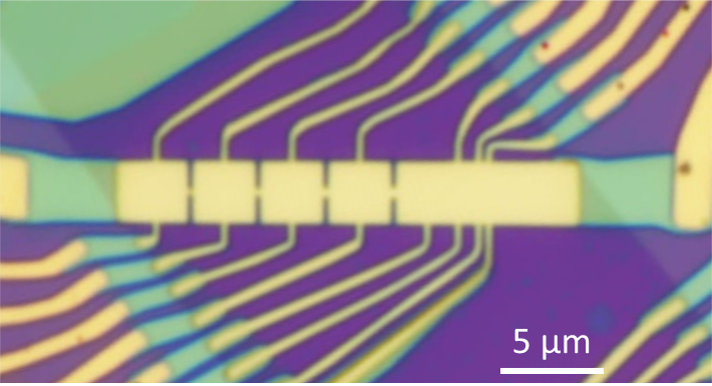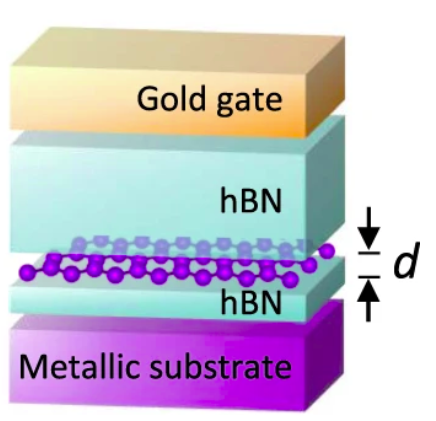
Electron-electron (e-e) interaction is believed to be the origin of many exotic quantum phenomena in condensed matter physics. It will be helpful for us to understand the mechanism of e-e interaction if we can control its strength.

The left figure demonstrates how we control e-e interaction in 2D platform by placing an atomically-flat metallic gate (few-layer graphite) proximately to monolayer graphene separated by an atomically-thin gate dielectric (few-layer h-BN) [1]. The title image shows the optical image of such device. The design of this device contains both vicinity and point-contact (or constriction) geometry, allowing us to use various measurements to detect e-e interaction in graphene.
By bringing the system into hydrodynamic regime, we can use viscosity measurement to detect e-e interactions which are quantitatively described by e-e scattering length. In our design, we can detect screen effect from three complementary approaches: onset fluidity from vicinity resistance [2], superballistic flow through constrictions [3], viscous hall effect in magnetohydrodynamic regime [4].
The technique used here can be applied to other system, such as magic-angle twisted bilayer graphene [5], and transition metal dichalcogenides.
References:
[1]. M. Kim, et. al., “Control of electron-electron interaction in graphene by proximity screening”, Nature Communications, 11, 2339, (2020).
[2]. D. A. Bandurin, et. al., “Fluidity onset in graphene”, Nature Communications, 9, 4533, (2018).
[3]. R. Krishna Kumar, et. al., “Superballistic flow of viscous electron fluid through graphene constrictions”, Nature Physics, 13, 1182-1185, (2017).
[4]. A. I. Berdyugin, et. al., “Measuring Hall viscosity of graphene’s electron fluid”, Science, 364(6436), 162-165, (2019).
[5]. P. Stepanov, et. al., “Untying the insulating and superconducting orders in magic-angle graphene”, Nature, 583, 375-378, (2020).